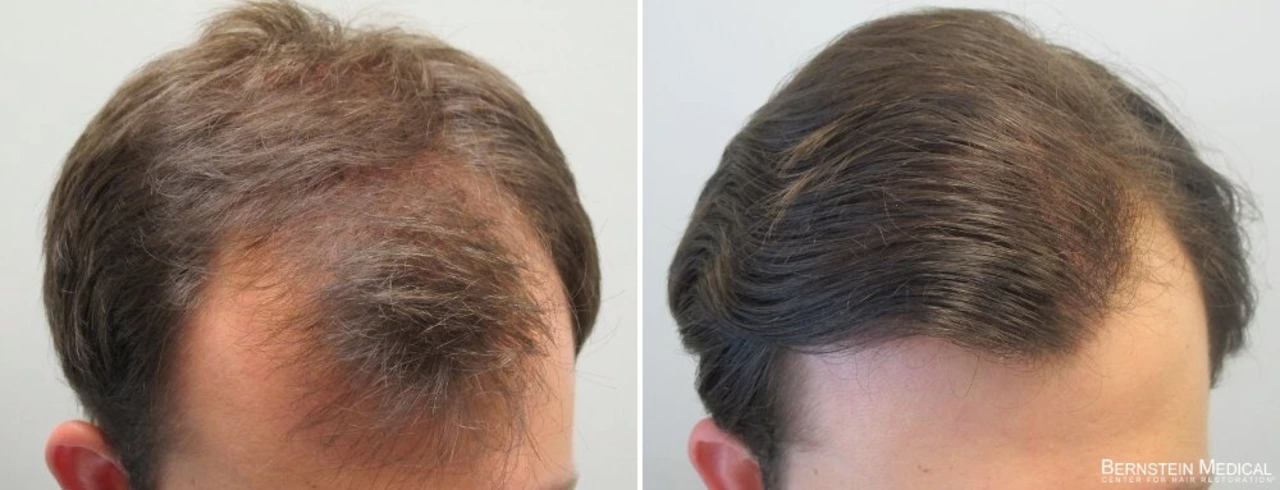Understanding Hair Loss and Its Causes
As we age, hair loss is a natural and inevitable process that many of us face. It can be distressing, especially when it starts happening earlier than expected. There are various factors that contribute to hair loss, including genetics, hormonal imbalances, and certain medical conditions. But, regardless of the reasons behind it, the science of hair loss and its treatments have come a long way.
In order to better understand how Minoxidil and Finasteride work to combat hair loss, it's essential to first understand the underlying causes of hair loss. This section will explore the different factors that can lead to hair loss, and how they can be addressed through various treatment options.
The Key Players: Minoxidil and Finasteride
Minoxidil and Finasteride are two of the most popular and scientifically proven treatments for hair loss. Both medications have been extensively studied and have shown promising results in combating hair loss and promoting hair regrowth. However, they work in different ways and have unique mechanisms of action.
Minoxidil, originally developed as a treatment for high blood pressure, was discovered to have the side effect of promoting hair growth. It's now widely used as a topical solution, applied directly to the scalp, to stimulate hair follicles and encourage hair regrowth. Finasteride, on the other hand, is an oral medication that works by inhibiting the production of a hormone called DHT, which is responsible for hair follicle shrinkage and hair loss. By blocking DHT production, Finasteride helps prevent hair loss and promotes hair regrowth.
How Minoxidil Stimulates Hair Growth
The exact mechanism of how Minoxidil works to promote hair growth is not entirely understood. However, researchers believe that Minoxidil works by increasing blood flow to the hair follicles, providing them with more oxygen and nutrients. This helps to prolong the hair's growth phase (anagen) and delays the shedding phase (telogen).
Minoxidil also appears to have a direct effect on hair follicle cells, stimulating them to produce more hair. It's important to note that Minoxidil doesn't work for everyone, and its effectiveness may vary depending on the individual and the underlying cause of their hair loss. However, for many people, Minoxidil can provide significant improvements in hair growth and thickness, especially when used consistently over a long period of time.
Finasteride's Role in Blocking DHT
Finasteride works to combat hair loss by targeting DHT (dihydrotestosterone), a hormone derived from testosterone. DHT is responsible for shrinking hair follicles, making it difficult for them to produce healthy hair. Over time, this can lead to hair thinning and, eventually, hair loss.
Finasteride blocks the enzyme 5-alpha reductase, which is responsible for converting testosterone into DHT. By inhibiting this enzyme, Finasteride helps to reduce the levels of DHT in the body, preventing hair follicle shrinkage and promoting hair regrowth. Finasteride is typically more effective in treating hair loss caused by hormonal factors, such as male pattern baldness, but it may not be as effective for other types of hair loss.
Combining Minoxidil and Finasteride for Optimal Results
While both Minoxidil and Finasteride have shown promising results in treating hair loss on their own, many experts believe that using them together may yield even better results. By combining the hair growth stimulation of Minoxidil with the DHT-blocking action of Finasteride, the two treatments can work synergistically to promote hair regrowth and prevent further hair loss.
It's essential to consult with a healthcare professional before starting any hair loss treatment regimen, as they can help determine the most effective course of action based on your specific needs and circumstances. Keep in mind that results may vary from person to person, and consistency is key to achieving the best possible outcome.







Donna Oberg
June 1, 2023 AT 16:42